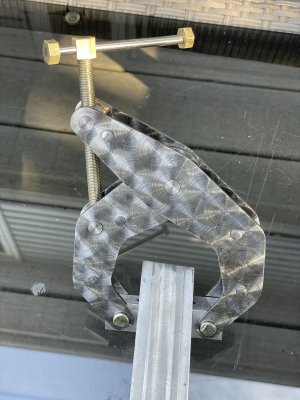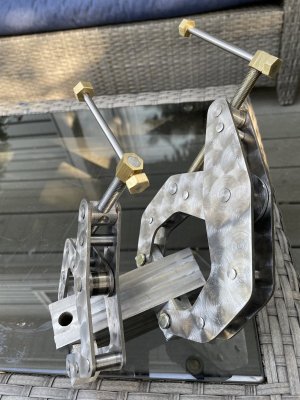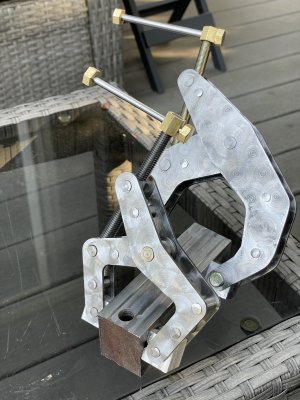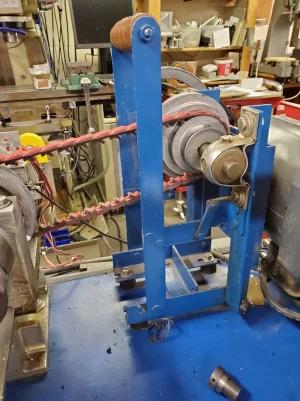Many years ago I used to build medieval armour. It was constructed with a large number of peened rivets. There are a bunch of ways to make a nice domed head - and just like most machinist arguments each one of them is the 'very best' - of course. I've used flat hammers, ball peen hammers and preformed and hardened 'rivet sets'. Jewelers use a Dome Plate (I think it is called) and the rivet is set facing downwards toward the plate. There are pneumatic cold peeners for rivets, too!
Any of them, with a skilled hand will do the job. each rivetting technique will yield a slightly different rivet. Those in the know might be able to see the difference.
What really matters, is that you get a rivet you like, that holds tight and doesn't crack in the making.
Any of them, with a skilled hand will do the job. each rivetting technique will yield a slightly different rivet. Those in the know might be able to see the difference.
What really matters, is that you get a rivet you like, that holds tight and doesn't crack in the making.




